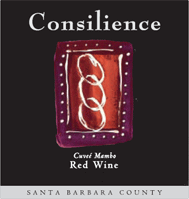|
|
Cuvée Mambo, Santa Barbara County |
 |
|
Wine Details
Price:
$38.00 per bottle
Description:
The artistry of blending is something we believe in not only to acheive consistency and balance, but to enhance the expressive style of our wines. Cuvée Mambo is a celebration of that freedom of expression. It began as a clean palette, developed through the sampling and blending of some of our most select barrels of unfinished syrah, petite sirah, zinfandel, and grenache, and emerged as a hedonistic blend free from all the usual rules. Kind of fun, we admit. Enjoy with a small group of friends, a raging fire, and your favorite pooch curled up at your feet. It's ready to drink now, but has firm enough tannins that it will continue to improve with a little bottle age.
|
|
|
Reviews
|

|
|
|
Back to Consilience Wines information
|
|
|